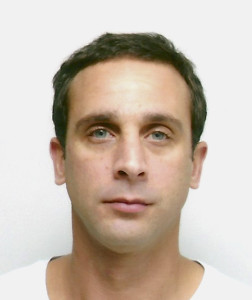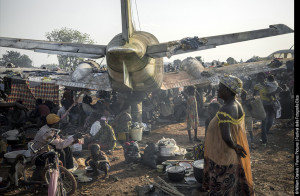William Daniels - C.A.R.

World.Report Award 2016 – Master Award
Award motivations
This is a story of a nation – a nation which is often a symbol of an entire continent – told through concise, journalistic, exacting and blunt photographs, typical of the great photojournalistic tradition.
Mankind, war, destruction and hope are coherently in front of us, connected by a subtle thread made of colors and shapes. Meanwhile the pictures and the text link us to history as only photojournalism, at its greatest, can do.
It is a kind of photojournalism that tells a story but does not attack the viewer, that speaks to the conscience but does not shout, that collects information without spectacularization.
This work of pure and great reportage brings the onlooker before millions of lives and paints a fresco of an entire country.
When I first visited the Central African Republic (CAR), the country was plunged into the worst crossroads of its short history. In 2013, rebels from the Seleka overthrew the state, unleashing nine months of anarchy. Militias called anti-Balaka, whose ranks consist of Christians and animists, then launched unprecedented attacks against Muslims for their perceived support of the Seleka.
I covered this conflict, mostly for news medias such as TIME magazine who committed to cover one of the world’s most neglected crisis.
But then I felt this was only one part of the story. After making several trips to CAR, I had emerged with an acute curiosity about the roots and context of this tragedy. I had a pounding desire to show the unseen side of this war. I had many questions in mind: How can this young country shift so suddenly to such violence? How can a country whose soil is often described as so rich, be so poor? How can a state be so fragile… and so easily overthrown? My goal was to document CAR behind the headlines.
Central African Republic has been vulnerable ever since gaining independence from France in 1960. Systemic corruption and meddling by external influencers have resulted in multiple coups d’etat. The misappropriation of the country’s vast natural resources, depriving the population of their economic benefits and causing the state to be continuously propped up by foreign donors. There is neither a working judiciary, which leads to total impunity, nor an efficient army. Hand grenades that cost the same as small candies have flooded the market and the lack of future prospects makes it easy for militias to attract young men. Access to health is one of the worst in the world. CAR population is devastated by malaria and chronic malnutrition. In 2014, the UN Development Program rated CAR as the second less developed country in the world. To this add close to a million displaced individuals – a fifth of the country’s population – part of which took refuge in Cameroon and Chad. More than a third of CAR’s children never set a foot in a school.
I travelled 10 times to CAR during the last two and half years (November, 2013-March, 2016). I have worked in areas abandoned by the state for decades. I have shot in diamond and gold mines controlled by armed groups. I have documented its health system that is almost entirely reliant on NGOs such as MSF (Médecins sans Frontières), which is currently the third employer of the country. Now that the country doesn’t appear in the medias, and while violence has somewhat lessened these past months, CAR remains on edge, and its future uncertain.
Text by William Daniels
William Daniels
 In 2007, William Daniels received the Jean-Luc Lagardère Foundation Fellowship, allowing him to document the nascent and fragile developments toward democracy in Kyrgyzstan. His work on the country culminated in the book “Faded Tulips”. Over a series of visits, William tried to understand the effect this ephemeral revolution had on those who fought for it, lived it, endured it. His study of the country offers a unique perspective on the struggle for democracy in a distant and little known country, a struggle repeated the world over.
In 2007, William Daniels received the Jean-Luc Lagardère Foundation Fellowship, allowing him to document the nascent and fragile developments toward democracy in Kyrgyzstan. His work on the country culminated in the book “Faded Tulips”. Over a series of visits, William tried to understand the effect this ephemeral revolution had on those who fought for it, lived it, endured it. His study of the country offers a unique perspective on the struggle for democracy in a distant and little known country, a struggle repeated the world over.
In 2008, his reportage on malaria, “Mauvais Air”, photographed in seven countries and exhibited in September 2008 on the Pont des Arts in Paris and in the European Parliament in 2011 is published as a book by Images en Manoeuvre. His work on crises naturally led him to conflict zones. In Libya, he covered the uprising against the Gaddafi regime until the fall of Tripoli. From 2013 onwards, William has been covering the Central African Republic. On ten journeys to the war-ravaged country, he comes across appalling violence. What will happen to this country that seems doomed to permanent instability? His photography constantly poses questions, highlights a tension in the reality before him. There is often a sense of being on the verge of collapse. In 2014, on the occasion of the “Nuit Blanche” in Paris, William exhibited a 100 meter long display of images from the Central African Republic along the Seine.
Since 2013, with support from National Geographic and with a grant from the CNAP (National Centre for Visual Arts), William has made a number of trips to the Russian Far East, on the Baikal-Amur Mainline (BAM) railway. The BAM charts a lonely course north of and parallel to the Trans-Siberian Railway. Its construction attracted huge numbers of workers from all over the Soviet Union in its heyday. Many of them were left behind when the project faltered and was curtailed.
His work has won numerous international awards including two World Press Awards, the Visa d’Or Humanitarian Award at Perpignan photo festival, the Tim Hetherington Grant and the Getty Grant.
William Daniels lives in Paris.




